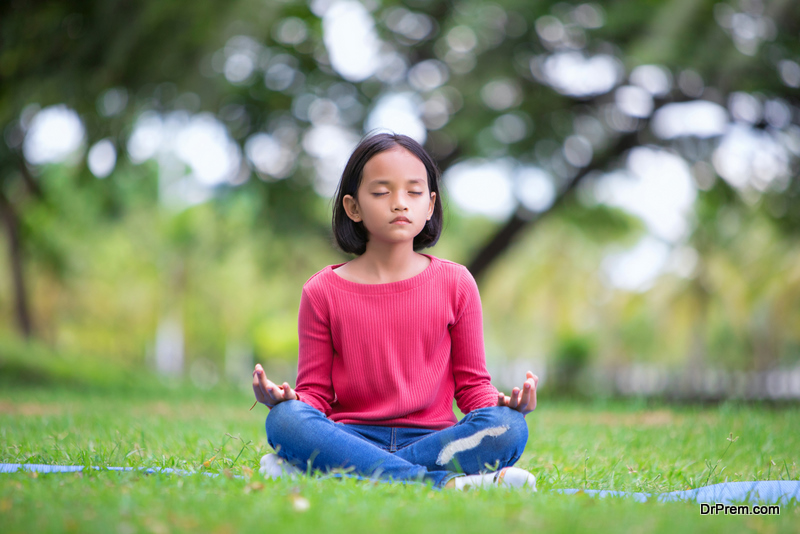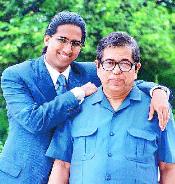Sometimes, getting kids involved in meditation is more of a process than you might expect. Just like you can’t expect yourself to just plop down and fall into Zen, you can’t expect that for your child right away either. Meditation is a journey of finding what works for you, and the same will apply to your kids. Children have growing, changing minds that need different kinds of stimuli, which might demand a different set of standards for meditation, and that’s okay.
Meditation can improve mental health and mental function by providing connection and relaxation. Though your kids’ meditation practice may look different from yours, it can play an important role in their growth and development no matter the method. By helping guide them to their practice, you’ve already taken the first step in getting started. When planning to get your kids deeper into their practice, there are a few ideas you can utilize to help them enjoy and benefit from their meditation.
1. Let Movement Play a Role
Kids often have more energy than they know what to do with, which means that they sometimes have trouble sitting still. Contrary to popular belief, you can work with this tendency, and even use it to their benefit. It’s possible — and not even just for kids — to incorporate movement into the practice of meditation to make it a fuller, more involved experience.
Practices like walking meditation practice mindfulness in an active way, and meditations following a more active yoga practice can lead to a more calming, centered meditation experience. This is often called mindful movement, and is beloved by many.
2. Consider Age and Development
Your child’s age and maturity level will influence the way that they meditate best. Toddlers and teens obviously have different needs, but there are nuances within the age spectrum, and paying attention to them can be key in developing a beneficial meditation practice with your child. While toddlers are much more likely to respond to mindful movement, preschool aged kids are likely able to handle sitting or laying down for the duration of their practice and may enjoy creating and focusing their breath on an activity like a fun glitter jar.
Bigger kids and teens are able to deepen their practices with things like mindfulness games, music, extended practices, mantras and guided meditations. Older kids and teens can benefit from learning about how meditation is a practice of self care, and that it’s important to watch over your mental and physical health. Really, the more you understand about your child’s development, the more they will get out of their practice.
3. Go for Guidance
Since bigger kids and teens often respond well to external stimuli in order to deepen their practice, guided meditations and meditation apps can be a great tool for them. This can put the power and responsibility of their progress in their own hands, giving them a sense of agency. However, meditation apps and guided tracks aren’t just for older kids or adults.
Many meditation apps have specific tracks that are designed for kids, and there are even specific apps made for that purpose. These can work as a supplement to your own plans or as a substitute on days when you feel overwhelmed but still want to help them find their practice.
4. Make Meditation Part of Your Bedtime Routine
One of the best ways to ingrain an activity for anyone — especially kids — is to make a routine of it. Situating meditation right at bedtime ensures that it doesn’t get lost in the chaos of the day, and that it’s something you don’t have to plan for. It’s like brushing your teeth and putting on pajamas.
Meditation is also a calming and soothing practice that can help kids wind down before they hit the hay. Instead of using a screen before bedtime, consider printing out some coloring pages to focus on as a relaxing bedtime activity. Especially if you’re working with seated or lying down meditation, the practice can serve to calm and center everyone just in time for a restful sleep.
5. Focus on the Breath
One of the most basic components of meditation is relying on the breath for focus, grounding and relaxation. If your child is having trouble focusing or understanding the components of meditation, you can always guide them back to focusing on their breathing. Thinking intently about each inhale and exhale, or doing a breathing exercise that involves counting can help bring them back into the meditation exercise so they can continue in their practice.
6. Let Your Kids Guide the Intention
Intention setting and focusing on mantras are techniques that often appear within meditation or alongside it. Teaching your children about intention setting and thinking about how they want to feel can be a great tool, and you can help them take it even further. Encouraging your child not just to use intentions and mantras, but to set their own and reflect deeply on them can help your child understand their own desires and emotions, and perhaps find more purpose in their personal meditation practice.
Asking questions like “How do you want to feel when we wrap up here?” or even “What is something you’d like to say to yourself today?” can be a great way to get them thinking about how their meditation practice serves them.
Meditation is beneficial for everyone, and when you give your kids the skills and tools to practice it as they grow up, they’ll take it into adulthood. Your kids won’t always practice the same way that you do, but you can help them find their own path so they can experience everything the practice has to offer.
Article Submitted By Community Writer




